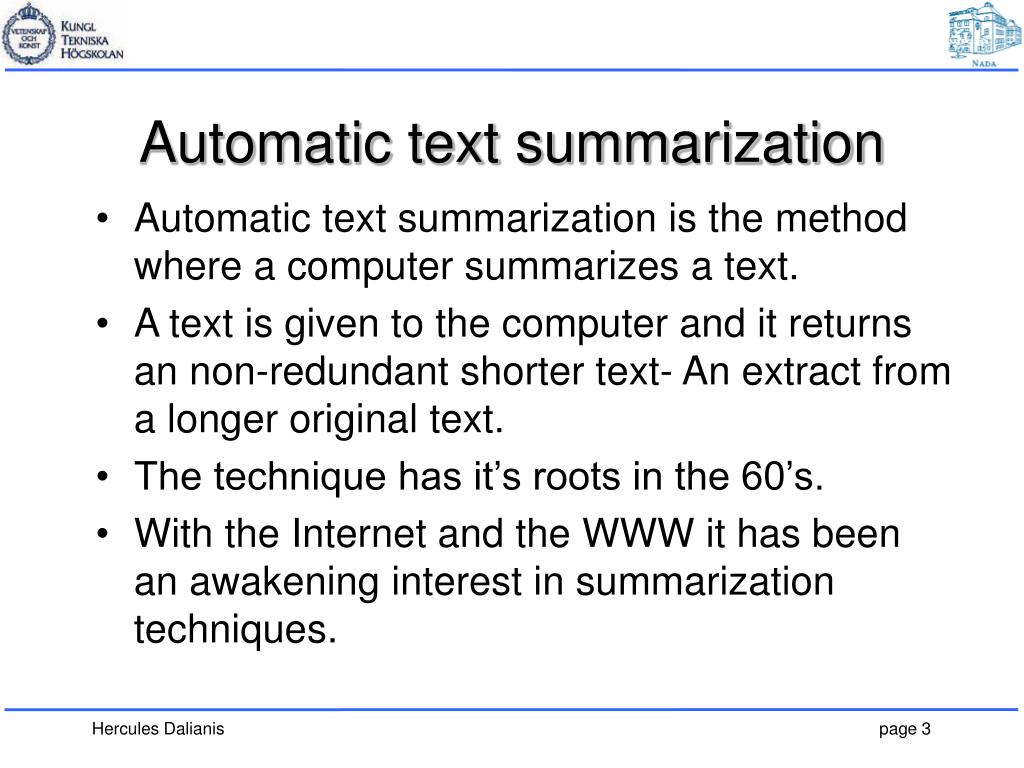

There are two main types of output-based summarization: extractive summarization and abstractive summarization.Įxtractive summarization involves selecting and condensing key information from the original text while maintaining the overall meaning and structure of the original content. Output-based summarizationĪnother way to classify text summarization is based on the output, or format of the summary. Multi-document summarization can be more challenging than single-document summarization, as it requires the ability to understand the relationships between multiple texts and to synthesize information from multiple sources. For example, we can classify summarization as single-document summarization, where the input is a single document, or multi-document summarization, where the input is a collection of multiple documents. One common way to classify text summarization is based on the input, or source of the text being summarized. Let’s delve deeper into each type of text summarization below. The picture below represents the interrelations between the types of summarization: Here are three common types of summarization: Text summarization involves the use of algorithms and techniques to analyze and extract the most important information from a given text. So, keep reading to learn more about this powerful tool. In this article, we'll take a closer look at what NLP text summarization is, how it works, its benefits, and some common use cases. The benefits of text summarization extend to a wide range of fields and professions, making it a highly useful tool for anyone looking to stay informed and stay ahead in today's information-saturated world.

Not only does text summarization save time and effort, but it is also crucial in ensuring the accuracy and completeness of a summary, especially when dealing with technical documents or sensitive legal and financial materials. Text summarization, a subfield of natural language processing (NLP), offers a solution to this problem through advanced algorithms and techniques that analyze and extract the most essential information from a given text. As the volume of written information continues to grow exponentially, the ability to efficiently and accurately condense and comprehend lengthy blocks of text has become more valuable than ever before.


 0 kommentar(er)
0 kommentar(er)
